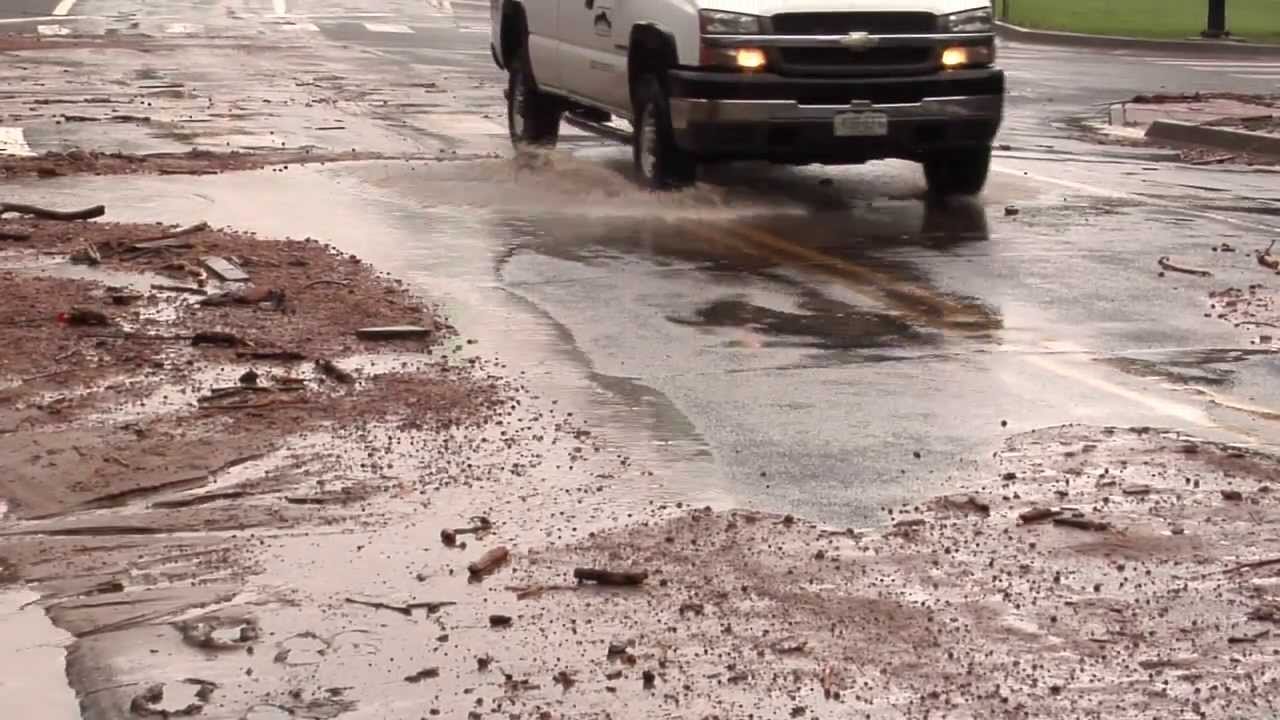Staying Safe During Flash Floods: Understanding Alerts And Emergency Procedures

Table of Contents
Understanding Flash Flood Alerts and Warnings
Knowing the difference between various alert levels is crucial for effective response to flash floods. Ignoring warnings can have devastating consequences.
Different Alert Levels
Different alert systems use varying terminology, but generally, you'll encounter these three levels:
-
Watch: Conditions are favorable for flash floods to develop. This isn't a cause for immediate panic, but it's a strong signal to monitor weather reports closely, prepare your emergency kit, and know your evacuation route. Think of it as a "heads-up." For example, heavy rainfall is predicted in your area, and the ground is already saturated.
-
Warning: Flash flooding is occurring or is imminent. This is a serious alert requiring immediate action. Evacuate if instructed to do so. Do not delay. For example, a nearby river has already overflowed its banks, and floodwaters are rapidly rising.
-
Advisory: Flash flooding is possible. Be aware of conditions and monitor weather reports carefully. While the risk is lower than a warning, it's still important to remain vigilant and prepared. For instance, there's a chance of heavy rainfall, but conditions aren't yet critical.
Multiple Alert Sources
Relying on a single source for flash flood alerts is risky. Diversify your information sources to ensure you receive timely warnings.
-
Popular Weather Apps: Numerous weather apps, such as AccuWeather, The Weather Channel, and WeatherBug, offer real-time alerts and forecasts, including flash flood warnings. Many incorporate GPS location services for personalized alerts.
-
National Oceanic and Atmospheric Administration (NOAA): NOAA's website and weather radio provide comprehensive weather information, including flash flood warnings and forecasts. Their alerts are highly reliable and cover large geographical areas.
-
Local News and Media: Local news channels and websites often provide timely updates and specific information about flash flood events in your area, including road closures and evacuation orders.
-
Wireless Emergency Alerts (WEA): Sign up for WEA on your mobile device to receive emergency alerts directly from your government. This is a critical system for receiving immediate warnings. Enabling these alerts is a simple yet vital safety precaution.
Interpreting Flood Forecasting
Understanding flood forecasts and maps is vital for assessing risk. These tools provide valuable insights into potential flood impact.
-
Reliable Sources for Flood Forecasts: The National Weather Service (NWS) is the primary source for reliable flood forecasts in the United States. Their website offers detailed information, maps, and predictions. [Link to NWS flood forecast page]
-
Interpreting Color-Coded Flood Risk Maps: Flood risk maps often use color-coding to indicate varying levels of risk. Familiarize yourself with the color scheme used by your local authorities. Red typically signifies high risk, while green indicates low risk.
-
Real-Time Updates: Check local news and social media for real-time updates on flash flood situations in your area. Citizen reports can provide valuable on-the-ground information.
Emergency Procedures During a Flash Flood
Knowing what to do during a flash flood is as crucial as knowing when a flood is coming. Your actions can be the difference between safety and danger.
Evacuation Procedures
If an evacuation order is issued, act immediately. Don't delay; time is of the essence during a flash flood.
-
Gather Essential Documents and Supplies: Quickly gather important documents (identification, insurance papers), medications, and a change of clothes. Pack these into easily transportable bags.
-
Know Your Evacuation Route and Designated Shelters: Pre-plan your evacuation route and locate nearby designated shelters in advance. Knowing your route reduces confusion during a stressful situation.
-
Move to Higher Ground Immediately: Seek higher ground as quickly and safely as possible. Avoid low-lying areas and floodplains.
-
Never Attempt to Drive Through Floodwaters: Even a few inches of fast-moving water can sweep a vehicle away. This is the leading cause of flash flood-related deaths.
If Trapped by a Flash Flood
If you're caught in a flash flood, your immediate priority is to stay safe and signal for help.
-
Seek Higher Ground Immediately: Climb to the highest point possible. If inside, move to an upper floor. If in a vehicle, abandon it if necessary and seek higher ground.
-
Climb to the Roof of Your Vehicle (Last Resort): Only do this as an absolute last resort if you cannot find other higher ground. This should only be considered if immediate danger of drowning is imminent.
-
Signal for Help If Possible: Use a bright cloth, whistle, or anything that can attract attention. Once you're safe, call for emergency assistance.
-
Do Not Enter Floodwaters: Floodwaters are extremely dangerous; currents are incredibly powerful and can contain hidden debris, making them deadly.
Post-Flood Safety
Once the floodwaters recede, there are crucial steps to take to ensure your safety and begin recovery.
-
Check for Structural Damage to Your Home: Carefully inspect your home for structural damage. If there are issues, contact a qualified professional.
-
Avoid Floodwaters: Floodwaters are often contaminated with sewage, chemicals, and other hazardous materials, posing risks to health and safety.
-
Report Damage to Authorities: Report any damage to your home or property to the appropriate authorities to facilitate insurance claims and recovery efforts.
-
Clean and Disinfect Affected Areas: Thoroughly clean and disinfect any areas affected by floodwaters to prevent the spread of disease and mold.
Conclusion
Staying safe during flash floods relies on preparedness and quick action. By understanding flash flood alerts, implementing emergency procedures, and staying informed, you can significantly reduce your risk. Remember to sign up for multiple alert systems, plan your evacuation routes, and never underestimate the power of flash floodwaters. Take proactive steps today to protect yourself and your loved ones from the dangers of flash floods. Learn more about flash flood safety and preparedness in your area to ensure you are well-equipped to handle these dangerous events. Don't wait for a warning—prepare for flash floods now.

Featured Posts
-
 G 7 Nations Consider Revised De Minimis Tariffs For Chinese Products
May 25, 2025
G 7 Nations Consider Revised De Minimis Tariffs For Chinese Products
May 25, 2025 -
 Sharp Decline In Amsterdam Stock Market Trade War Uncertainty Impacts Trading
May 25, 2025
Sharp Decline In Amsterdam Stock Market Trade War Uncertainty Impacts Trading
May 25, 2025 -
 Memorial Day Poster Contest Hawaii Keiki Celebrate With Lei Making Art
May 25, 2025
Memorial Day Poster Contest Hawaii Keiki Celebrate With Lei Making Art
May 25, 2025 -
 Myrtle Beach Fights Back Against Most Unsafe Beach Ranking
May 25, 2025
Myrtle Beach Fights Back Against Most Unsafe Beach Ranking
May 25, 2025 -
 News Corp Undervalued And Underappreciated Analyzing The Potential
May 25, 2025
News Corp Undervalued And Underappreciated Analyzing The Potential
May 25, 2025
Latest Posts
-
 Anatropi Stin F1 I Mercedes Den Endiaferetai Pleon Gia Ton Verstappen
May 25, 2025
Anatropi Stin F1 I Mercedes Den Endiaferetai Pleon Gia Ton Verstappen
May 25, 2025 -
 F1 I Mercedes Allazei Stoxoys O Verstappen Ektos Sxedion
May 25, 2025
F1 I Mercedes Allazei Stoxoys O Verstappen Ektos Sxedion
May 25, 2025 -
 Mercedes I Allagi Stratigikis Gia Tin Epomeni Sezon Tis F1
May 25, 2025
Mercedes I Allagi Stratigikis Gia Tin Epomeni Sezon Tis F1
May 25, 2025 -
 O Verstappen Den Einai Pleon Proteraiotita Gia Ti Mercedes
May 25, 2025
O Verstappen Den Einai Pleon Proteraiotita Gia Ti Mercedes
May 25, 2025 -
 Rising Tennis Culture In China Impact Of Top International Players
May 25, 2025
Rising Tennis Culture In China Impact Of Top International Players
May 25, 2025
